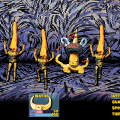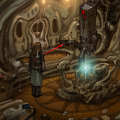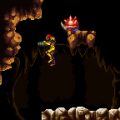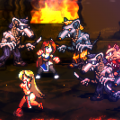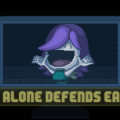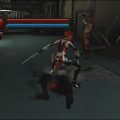- Lisa The First
- Lisa The Painful
- Lisa The Joyful
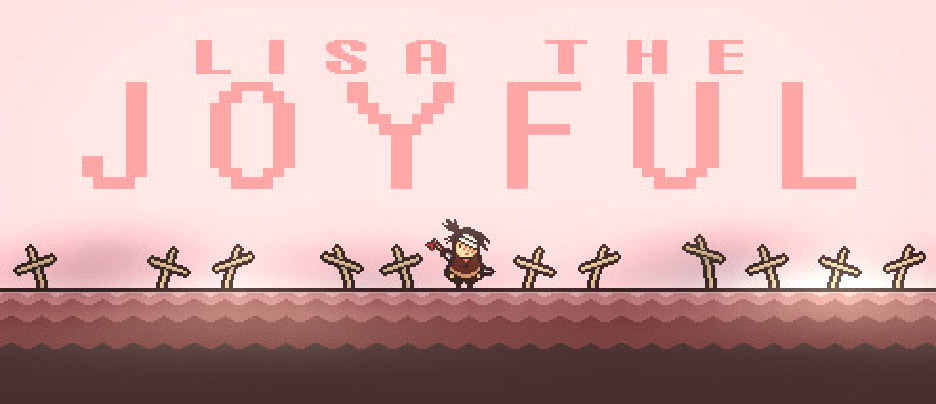
Lisa The Joyful, a short DLC campaign created from reaching a stretch goal on Painful‘s kickstarter, has the difficult job of wrapping up the loose ends and continuing with Buddy’s story, and it continues with that abuse theme by portraying Buddy as a monster born from a monstrous world. After every horrible thing she went through during Painful and before while being raised by Brad, Buddy has become a killing machine who feels no sympathy for those around her. She sees the world as something that only wants to hurt her, so she decides the best course of action is to kill the strongest men in the world and rule over the entire thing. She wants to be free, but has no idea what she would even do with that freedom, and the entire wasteland ends up paying for every single bit of pain she’s had to endure from it.
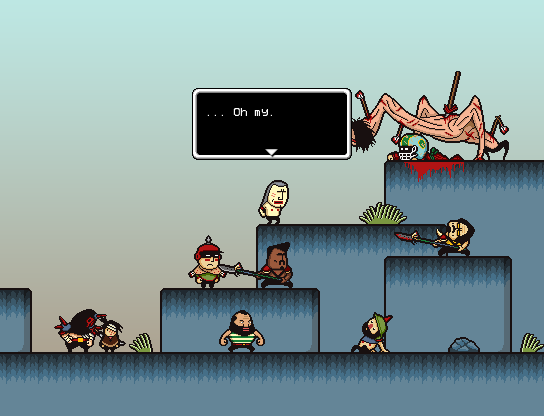
There are only two characters in Joyful you have any control over, Buddy herself and the wasteland warrior Rando from Painful, and he doesn’t stay in the party for the game’s second half. Thus, the game’s focus changes from surviving a harsh world to ripping through it, with a more mechanically complicated lead that requires precise timing for doing big damage and a greater focus on using whatever items you can find. Joyful can be incredibly difficult, but having Rando on for the first half gives some breathing room to learn Buddy’s strange move set and her own little mechanical touches. Where Brad traveled the wasteland slowly if not on bike, Buddy can dash over short pits with ease and even launch surprise attacks on enemies near hills to avoid unnecessary encounters. Buddy is a legitimately empowering character, almost addictive to play as, which also fits into the game’s narrative focus perfectly.
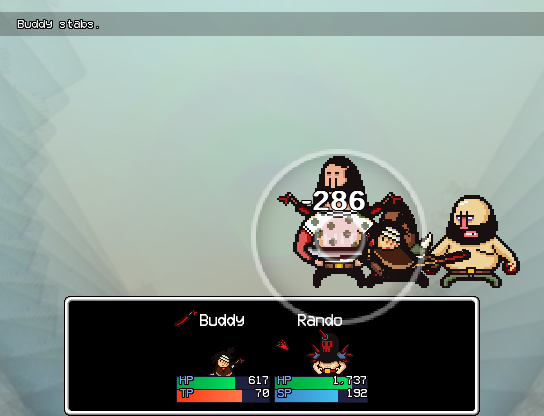
Joyful is just as the title describes, a game where everything is based around mechanics that feel good instead of grueling. However, still being a Lisa game, that feeling of power slowly becomes unnerving. The musical score is now much more experimental, with odd combinations and clashes of style that almost sound like audible insanity, especially the track 666 Chop Kill Deluxe, a mixture of opera singing played through an old radio, electronic beats, air horns, what appears to be violins, and and a whole mess of other stuff.
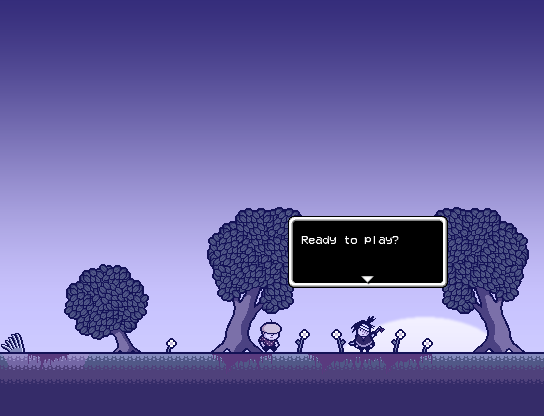
Many of the people Buddy kills don’t seem to deserve it, and killing a few of them may hurt the wasteland in ways she never considered because of her small worldview. The pacifist village particularly sticks out, as any time Buddy runs into one of the pacifists, an option to fight them pops up and the cursor is always on yes by default. She even muses that people who refuse to fight for their lives deserve death, really showing how far gone she is. Where Brad’s issues stem from the need to identify as someone who helps others, Buddy’s issues come from the need to be able to find an identity. Her ability to wear masks not only serves as a mechanic to avoid fights, but also highlights how she doesn’t really have an identity for herself. She has learned that might makes right from everything she has seen, so she decides being the strongest is the only identity she can have to have the freedom she desires so much, and she will have it, no matter the cost.
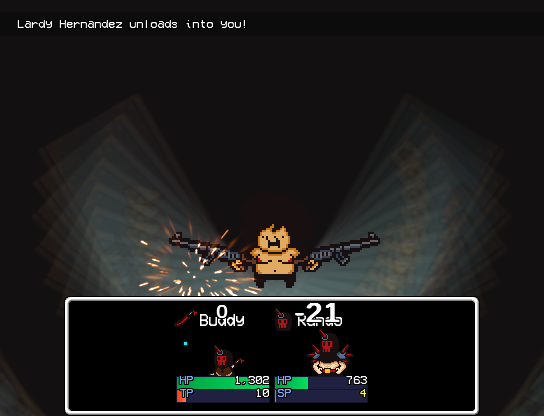
The game really goes all in on grim imagery, as the bodies that litter the game’s main area stack the more Buddy kills, even showing visions of already dead characters looking down on her, as Lisa often did for Brad. The final boss is a bizarre haze of visions, and the final choice is presented through Buddy talking with visions of someone she killed. By that point, there’s no longer much focus left on learning the true story of how the Flash happened or where the mutants came from, just Buddy finding some sort of peace she’s never gotten to know. The game leaves with one last possible flash of hope, suggesting that no matter what has been done to us, we still have the ability to decide who we want to be and work towards it, though not necessarily easily. Even Brad, in his ultimately tragic journey, could still help people in small ways. We can still be more than our pain, and we have to be for the sake of everyone around us.
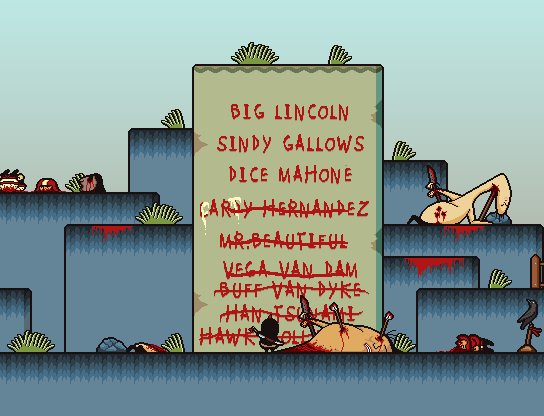
Lisa, as a series, is commonly compared to the Mother series and the later released Undertale, and with good reason. All of these games tap into real, genuine humanity through absurdity both funny and disturbing, and they toy with their genres in ways most could never even imagine doing. However, Lisa is more than just being similar to those games. Where Mother is about seeing things through childhood and Undertale is about how we attach ourselves to stories as we grow, Lisa is a series about pain and trauma. It’s filled with gallows humor even Mother 3 would shy away from, and it is filled with characters that aren’t particularly likable, and if they are, something horrible will probably happen to them. But even the worst people in these games show something good within them, even in the smallest gesture or plea. Where the games so many compare it to are focused on comprehending with no experience or through the filters of media, Lisa is about people who have grappled with real, horrible trauma, and yet these games still manage to find something beautiful to latch onto.
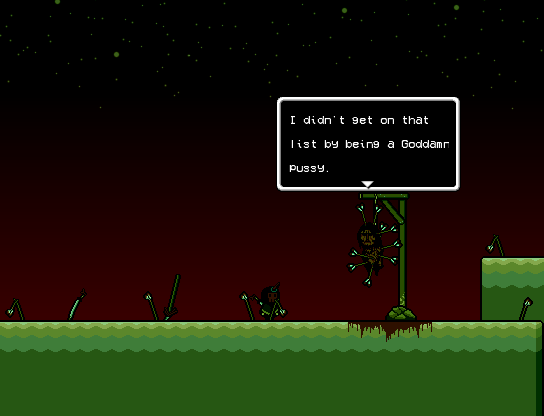
Even in Lisa The First, there’s one brief memory where Lisa remembers when her dad used to play with her, having a little tea party with her. The most difficult thing to grasp with these games is that they seem to argue there is no absolute good or evil. People are flawed, and so, so many of them are broken. But even then, people can be more than their pain. Even as the world is literally dying, people still create, still chase their dreams, still do good for others simply because. No matter what horrors Lisa portrays, the world is more than those horrors.
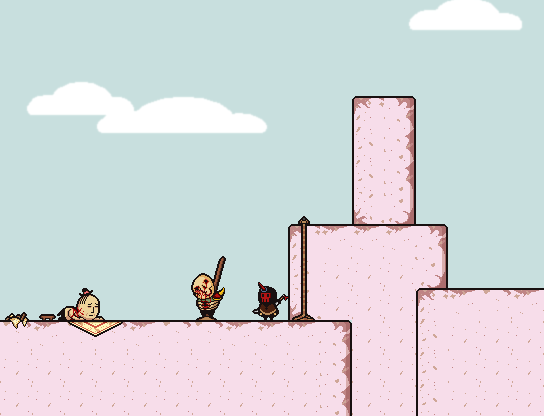
Ultimately, Lisa is a series all about seeing past our pain, and it may have a far larger impact than you may realistically believe. Lisa is one of those series that comes once every blue moon that truly transcends everything that came before it. Even with the limitations of the RPG Maker engine, even with slight glitching here and there, and even with some awkward control decisions (like Buddy’s timing moves not mixing with Rando’s combo inputs), the sheer beauty of the series negates almost all of this. Not even the biggest budgeted RPGs could ever hope to capture something as human as this series has.


